Ivan Dokmanić
University of Basel
End-to-end localized deep learning for Cryo-ET
Jan 25, 2025Abstract:Cryo-electron tomography (cryo-ET) enables 3D visualization of cellular environments. Accurate reconstruction of high-resolution volumes is complicated by the very low signal-to-noise ratio and a restricted range of sample tilts, creating a missing wedge of Fourier information. Recent self-supervised deep learning approaches, which post-process initial reconstructions done by filtered backprojection (FBP), have significantly improved reconstruction quality, but they are computationally expensive, demand large memory, and require retraining for each new dataset. End-to-end supervised learning is an appealing alternative but is impeded by the lack of ground truth and the large memory demands of high-resolution volumetric data. Training on synthetic data often leads to overfitting and poor generalization to real data, and, to date, no general end-to-end deep learning reconstructors exist for cryo-ET. In this work, we introduce CryoLithe, a local, memory-efficient reconstruction network that directly estimates the volume from an aligned tilt-series, overcoming the suboptimal FBP. We demonstrate that leveraging transform-domain locality makes our network robust to distribution shifts, enabling effective supervised training and giving excellent results on real data -- without retraining or fine-tuning.
Neural equilibria for long-term prediction of nonlinear conservation laws
Jan 12, 2025Abstract:We introduce Neural Discrete Equilibrium (NeurDE), a machine learning (ML) approach for long-term forecasting of flow phenomena that relies on a "lifting" of physical conservation laws into the framework of kinetic theory. The kinetic formulation provides an excellent structure for ML algorithms by separating nonlinear, non-local physics into a nonlinear but local relaxation to equilibrium and a linear non-local transport. This separation allows the ML to focus on the local nonlinear components while addressing the simpler linear transport with efficient classical numerical algorithms. To accomplish this, we design an operator network that maps macroscopic observables to equilibrium states in a manner that maximizes entropy, yielding expressive BGK-type collisions. By incorporating our surrogate equilibrium into the lattice Boltzmann (LB) algorithm, we achieve accurate flow forecasts for a wide range of challenging flows. We show that NeurDE enables accurate prediction of compressible flows, including supersonic flows, while tracking shocks over hundreds of time steps, using a small velocity lattice-a heretofore unattainable feat without expensive numerical root finding.
LoFi: Scalable Local Image Reconstruction with Implicit Neural Representation
Nov 07, 2024Abstract:Neural fields or implicit neural representations (INRs) have attracted significant attention in machine learning and signal processing due to their efficient continuous representation of images and 3D volumes. In this work, we build on INRs and introduce a coordinate-based local processing framework for solving imaging inverse problems, termed LoFi (Local Field). Unlike conventional methods for image reconstruction, LoFi processes local information at each coordinate \textit{separately} by multi-layer perceptrons (MLPs), recovering the object at that specific coordinate. Similar to INRs, LoFi can recover images at any continuous coordinate, enabling image reconstruction at multiple resolutions. With comparable or better performance than standard CNNs for image reconstruction, LoFi achieves excellent generalization to out-of-distribution data and memory usage almost independent of image resolution. Remarkably, training on $1024 \times 1024$ images requires just 3GB of memory -- over 20 times less than the memory typically needed by standard CNNs. Additionally, LoFi's local design allows it to train on extremely small datasets with less than 10 samples, without overfitting or the need for regularization or early stopping. Finally, we use LoFi as a denoising prior in a plug-and-play framework for solving general inverse problems to benefit from its continuous image representation and strong generalization. Although trained on low-resolution images, LoFi can be used as a low-dimensional prior to solve inverse problems at any resolution. We validate our framework across a variety of imaging modalities, from low-dose computed tomography to radio interferometric imaging.
SeisLM: a Foundation Model for Seismic Waveforms
Oct 21, 2024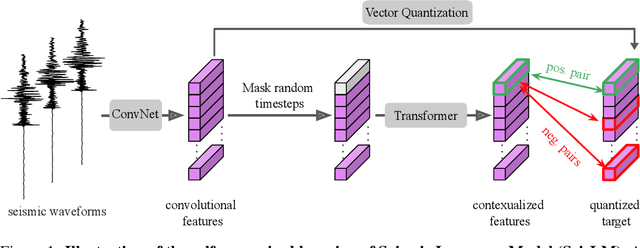

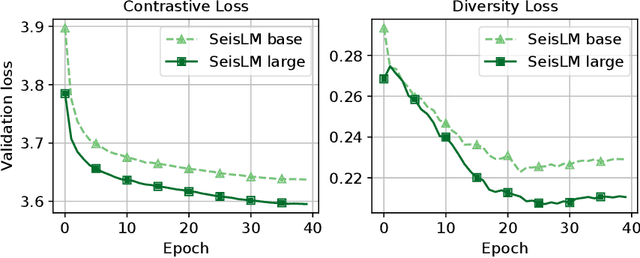
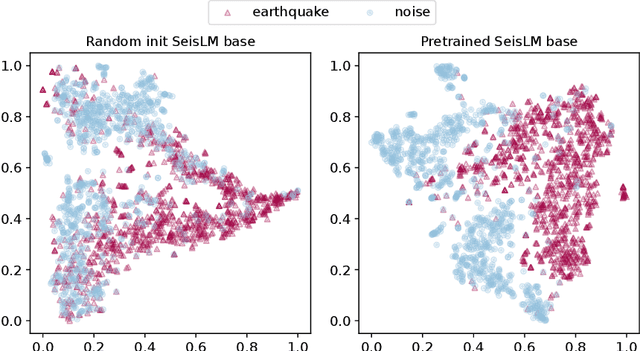
Abstract:We introduce the Seismic Language Model (SeisLM), a foundational model designed to analyze seismic waveforms -- signals generated by Earth's vibrations such as the ones originating from earthquakes. SeisLM is pretrained on a large collection of open-source seismic datasets using a self-supervised contrastive loss, akin to BERT in language modeling. This approach allows the model to learn general seismic waveform patterns from unlabeled data without being tied to specific downstream tasks. When fine-tuned, SeisLM excels in seismological tasks like event detection, phase-picking, onset time regression, and foreshock-aftershock classification. The code has been made publicly available on https://github.com/liutianlin0121/seisLM.
Joint Graph Rewiring and Feature Denoising via Spectral Resonance
Aug 13, 2024Abstract:Graph neural networks (GNNs) take as input the graph structure and the feature vectors associated with the nodes. Both contain noisy information about the labels. Here we propose joint denoising and rewiring (JDR)--an algorithm to jointly denoise the graph structure and features, which can improve the performance of any downstream algorithm. We do this by defining and maximizing the alignment between the leading eigenspaces of graph and feature matrices. To approximately solve this computationally hard problem, we propose a heuristic that efficiently handles real-world graph datasets with many classes and different levels of homophily or heterophily. We experimentally verify the effectiveness of our approach on synthetic data and real-world graph datasets. The results show that JDR consistently outperforms existing rewiring methods on node classification tasks using GNNs as downstream models.
A spring-block theory of feature learning in deep neural networks
Jul 28, 2024
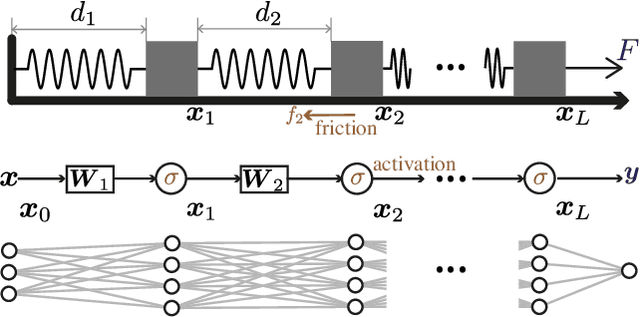
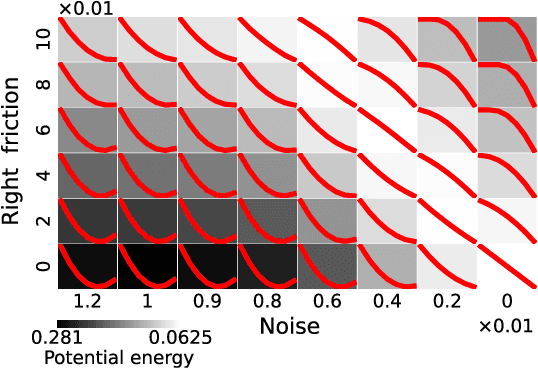
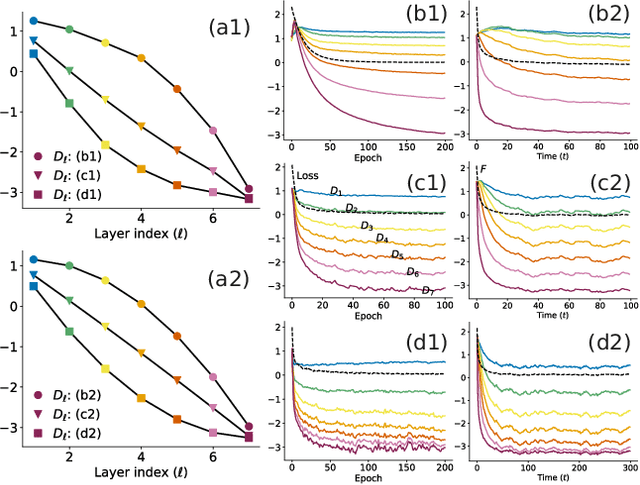
Abstract:A central question in deep learning is how deep neural networks (DNNs) learn features. DNN layers progressively collapse data into a regular low-dimensional geometry. This collective effect of non-linearity, noise, learning rate, width, depth, and numerous other parameters, has eluded first-principles theories which are built from microscopic neuronal dynamics. Here we present a noise-non-linearity phase diagram that highlights where shallow or deep layers learn features more effectively. We then propose a macroscopic mechanical theory of feature learning that accurately reproduces this phase diagram, offering a clear intuition for why and how some DNNs are ``lazy'' and some are ``active'', and relating the distribution of feature learning over layers with test accuracy.
Ice-Tide: Implicit Cryo-ET Imaging and Deformation Estimation
Mar 04, 2024Abstract:We introduce ICE-TIDE, a method for cryogenic electron tomography (cryo-ET) that simultaneously aligns observations and reconstructs a high-resolution volume. The alignment of tilt series in cryo-ET is a major problem limiting the resolution of reconstructions. ICE-TIDE relies on an efficient coordinate-based implicit neural representation of the volume which enables it to directly parameterize deformations and align the projections. Furthermore, the implicit network acts as an effective regularizer, allowing for high-quality reconstruction at low signal-to-noise ratios as well as partially restoring the missing wedge information. We compare the performance of ICE-TIDE to existing approaches on realistic simulated volumes where the significant gains in resolution and accuracy of recovering deformations can be precisely evaluated. Finally, we demonstrate ICE-TIDE's ability to perform on experimental data sets.
GLIMPSE: Generalized Local Imaging with MLPs
Jan 01, 2024Abstract:Deep learning is the current de facto state of the art in tomographic imaging. A common approach is to feed the result of a simple inversion, for example the backprojection, to a convolutional neural network (CNN) which then computes the reconstruction. Despite strong results on 'in-distribution' test data similar to the training data, backprojection from sparse-view data delocalizes singularities, so these approaches require a large receptive field to perform well. As a consequence, they overfit to certain global structures which leads to poor generalization on out-of-distribution (OOD) samples. Moreover, their memory complexity and training time scale unfavorably with image resolution, making them impractical for application at realistic clinical resolutions, especially in 3D: a standard U-Net requires a substantial 140GB of memory and 2600 seconds per epoch on a research-grade GPU when training on 1024x1024 images. In this paper, we introduce GLIMPSE, a local processing neural network for computed tomography which reconstructs a pixel value by feeding only the measurements associated with the neighborhood of the pixel to a simple MLP. While achieving comparable or better performance with successful CNNs like the U-Net on in-distribution test data, GLIMPSE significantly outperforms them on OOD samples while maintaining a memory footprint almost independent of image resolution; 5GB memory suffices to train on 1024x1024 images. Further, we built GLIMPSE to be fully differentiable, which enables feats such as recovery of accurate projection angles if they are out of calibration.
A Theoretical Analysis of the Test Error of Finite-Rank Kernel Ridge Regression
Oct 03, 2023Abstract:Existing statistical learning guarantees for general kernel regressors often yield loose bounds when used with finite-rank kernels. Yet, finite-rank kernels naturally appear in several machine learning problems, e.g.\ when fine-tuning a pre-trained deep neural network's last layer to adapt it to a novel task when performing transfer learning. We address this gap for finite-rank kernel ridge regression (KRR) by deriving sharp non-asymptotic upper and lower bounds for the KRR test error of any finite-rank KRR. Our bounds are tighter than previously derived bounds on finite-rank KRR, and unlike comparable results, they also remain valid for any regularization parameters.
Implicit Reconstructions from Deformed Projections for CryoET
Jul 25, 2023Abstract:Cryo-electron tomography (cryoET) is a technique that captures images of biological samples at different tilts, preserving their native state as much as possible. Along with the partial tilt series and noise, one of the major challenges in estimating the accurate 3D structure of the sample is the deformations in the images incurred during the acquisition. We model these deformations as continuous operators and estimate the unknown 3D volume using implicit neural representations. This framework allows to easily incorporate the deformation and estimate jointly the deformation parameters and the volume using a standard optimization algorithm. This approach doesn't require training data and can benefit from standard prior in the optimization procedure.
 Add to Chrome
Add to Chrome Add to Firefox
Add to Firefox Add to Edge
Add to Edge